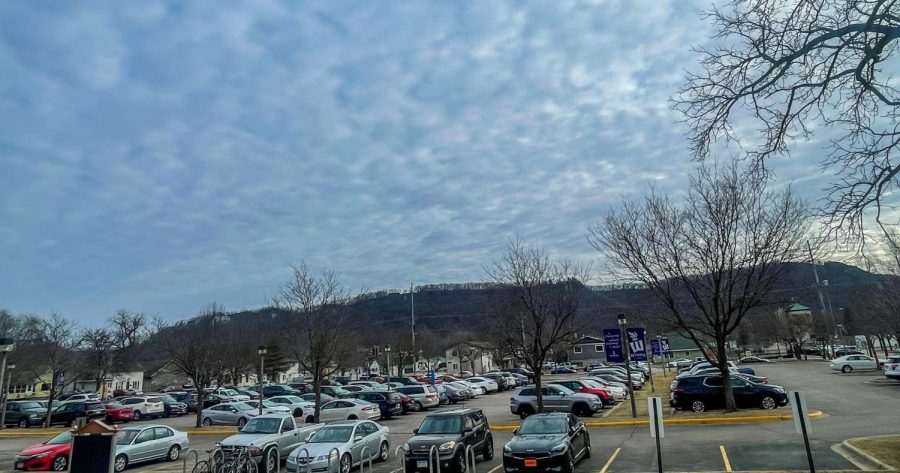Winona State to install rooftop solar panels for landmark $12 million energy-saving plan
Winona State University’s Integrated Wellness Complex’s parking lot will soon have a ‘roof’ of solar panels thanks to a landmark sustainability project: the LESS Plan. The project will cut Winona State’s carbon emissions by nearly 1/4.
March 30, 2022
Winona State University’s Integrated Wellness Complex (IWC) is getting an energy-saving addition, although not as a new wing or gymnasium update–but solar panels.
Winona State is commencing the new project to save on energy costs and lower its carbon emissions. The flagship of this project will be the construction of an array of solar panels fixed above the parking lot of the IWC. This will not be the only area on Winona State’s campus with solar panels though.
Nathan Engstrom, the head of sustainability at Winona State, said there are six other rooftop solar panel systems being placed to ‘up’ the amount of solar energy the university will produce. These additions will be located on the rooftops of the Kirkland and Haake residence halls, the IWC, the McCown Gym and two other buildings in the Education Village.
The new solar project, part of the Leading Energy Savings and Sustainability (LESS) Project, is meant to save the university money in the long run. According to Engstrom, the project will save the university $150,000 per year and the project as a whole could save them about $26 million over the next 25 years. Engstrom also stated that of the energy the university will be producing through these solar panels, “41% is coming from the car ports.” That is, the solar panels soon to be in the IWC parking lot.
This project will come at a substantial cost. Around 2017-2019, the university spent an average of $1.7 million on energy per year. The solar part of the LESS project is about $4 million, according to Engstrom. The costs of constructing the steel structures to hold up the panels and the foundations could tack on another $1 million.
Solar energy is not the only way that Winona State plans to cut down on energy costs and consumption. Engstrom also explained the LESS Project as a whole, including the solar panel additions, will cost around $12 million. This project package includes 10 different plans that will help reduce energy costs and emissions for the university, including more efficient interior and exterior lighting, irrigation, upgraded automation for different buildings on campus and pipe insulation. It will also include water conservation projects, such as replacing the plumbing in residence halls, a change which is already in the works and many students have taken notice of as several halls’ bathrooms are being renovated.
These new energy conservation projects part of the overarching LESS project will help the university meet their goals for better sustainability. Engstrom went on to state the visible importance of the solar panels, saying that “it kind of gives the project something really tangible to sort of represent the overall goals that drive this project.”
After the project is put into motion, it will cut down about 25% of the university’s carbon emissions.



































